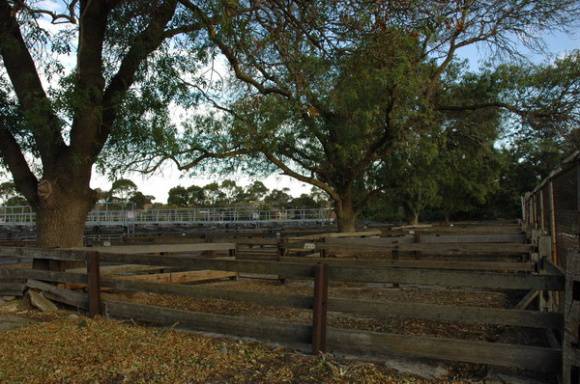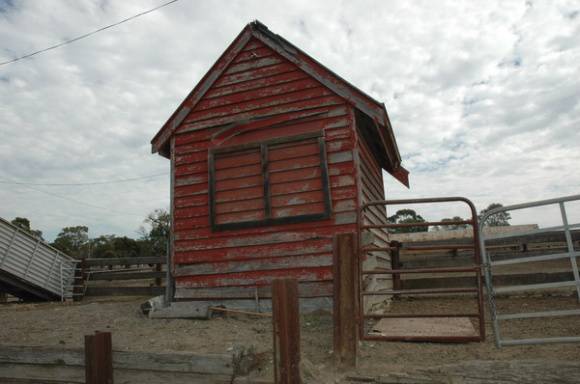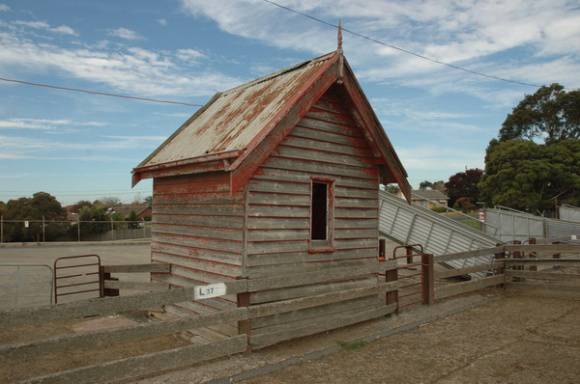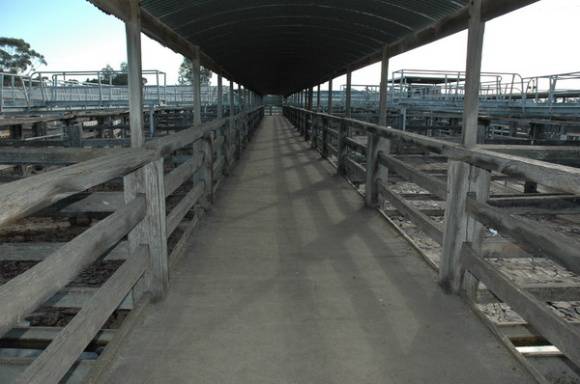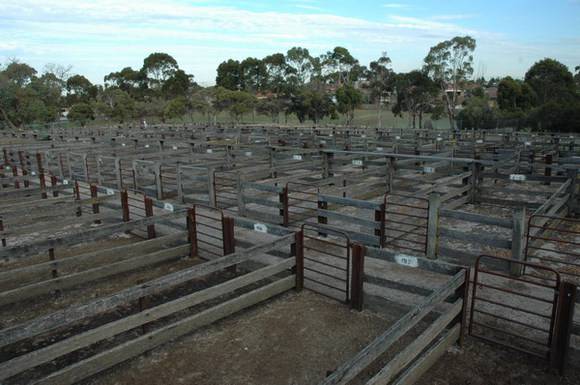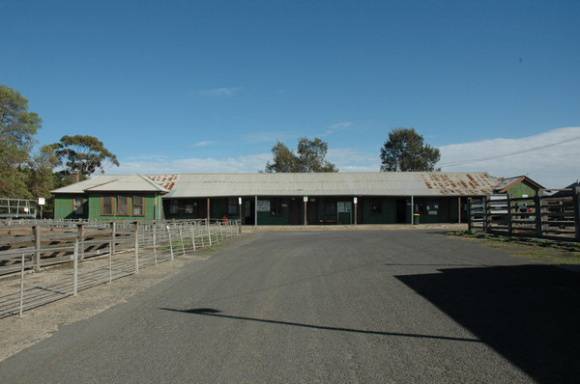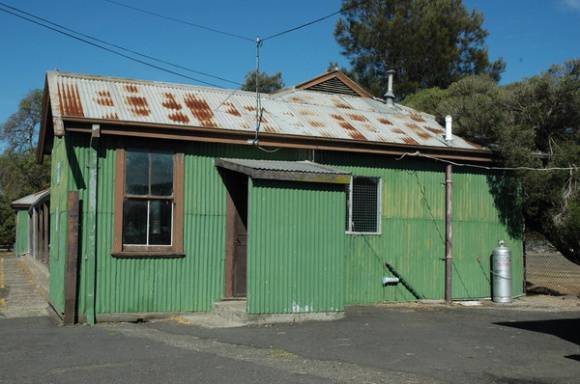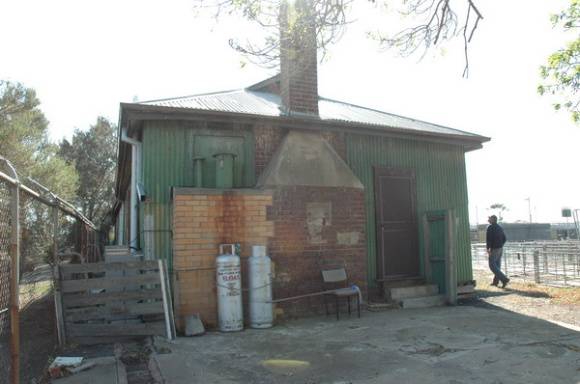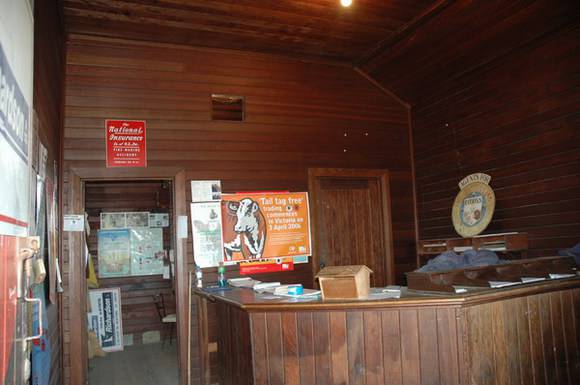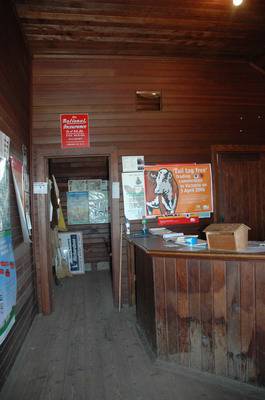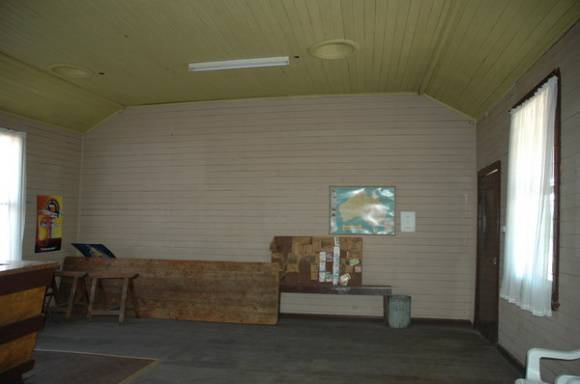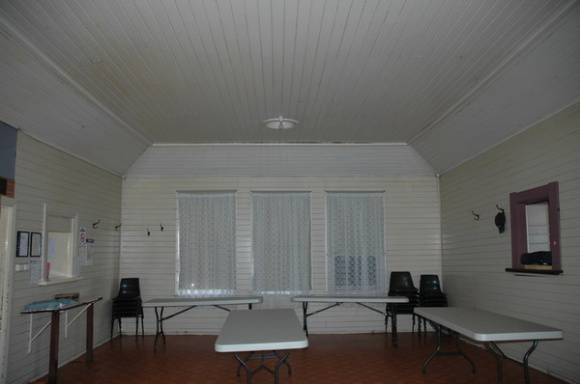| Back to search results » | Back to search page » |
|
Saleyards
Statement of Significance
STATE SIGNIFICANCE - A LISTED
What is Significant? The Geelong Sale Yards, Weddell Road, North Geelong has significance as the most intact functioning 19th century municipal stock yards known in Victoria. The second municipal Sale Yards to be built in Geelong, these Sale Yards were established in 1869 by the Town of Geelong to a layout and design by the Town Surveyor, Robert Balding. The need for larger and up-to-date stock yards reflects the importance of the local agricultural industry to the Geelong economy in the 19th century. The rectangular layout of the cattle and sheep yards, construction of the vernacular timber post and rail pen fences and gates, and the concept of elevated narrow covered walkways, was influenced by the layout and design of the Newmarket yards in Kensington and the Ballarat yards. Surviving early fabric of the Geelong Sale Yards includes the layout of cattle and sheep yards divided by a central thoroughfare, timber post and rail cattle and sheep pen fencing and gates, elevated and narrow covered cattle yard walkways, bluestone pen paving, stands of mature Ash trees shading the western sheep pens, former Caretaker's Cottage and the bluestone spoon drains. The Market Office building represents the second structure of its type on the site, having replaced the earlier structure as a "temporary" building in 1913. The vernacular Edwardian building appears to have been designed by the City Surveyor, H.L. Tisdall and has served the Sale Yards as stock and station agent offices, refreshment rooms, kitchen and lunch room to the present day. The interior of the building is substantially intact, including v-jointed timber ceiling and wall linings. In the stock and station agents' offices are original built-in timber sale benches with in-trays, wall-mounted timber shelving (for paperwork), timber bench seats and the timber writing desks. Also contributing to an appreciation of the early 20th century evolution and development of the yards is the former Latrine's Shed, built in c.1913. How is it Significant? The Geelong Sale Yards are historically, scientifically and socially significant to the State of Victoria. The interiors of the Market Office building at the Geelong Sale Yards are architecturally significant at a LOCAL level. Why is it Significant? Newmarket Sale Yards in Flemington and the Ballarat Sale Yards. The Newmarket yards closed in 1987 and were transformed into a medium density residential estate, with only a small area of cattle pens, fencing and a 19th century brick Administration building surviving. The Ballarat yards represent the earliest known functioning 19th century stock yards in Victoria, but apparently little original fabric survives. The interiors of the Market Offices building at the Geelong Sale Yards also contribute to its high level of historical significance. The Geelong Sale Yards are also historically significant for its long-standing associations with the Corporation of Geelong (now the City of Greater Geelong). Since 1869, the sale yards have continued to function as municipal yards. There are also historical associations with long-serving and influential stock and station agents who have been critical to the successful operation of the Sale Yards in the 19th and 20th centuries. These agents include: John Toyne (Toyne Brothers and Walsh) whose 40-year association with the yards included approximately 18 years as lessee; and H.F. Richardson agents, whose associations began with H.F. Richardson when a Member of Parliament assisted in securing the land for the yards and through successive generations of the Richardson family whose business has been transacted at the Geelong yards to the present day. Other early influential agents have included George Synnot Junior and Messrs Guthrie Bullock and Co. The Geelong Sale Yards are socially significant at a STATE level (Criterion G). For almost 140 years, the Geelong Sale Yards has been a centre for business and social interaction between farmers, stock agents and others associated with the livestock industry. The weekly Monday sales at the Geelong yards continue a long tradition of providing an important secondary benefit to the users of the yards. The Refreshment Room and Bar in the Market Offices buildings have been the location for informal counseling, education, business and most of all much-needed friendship. This social value is has been especially important for farmers, who rely on the operation of the Sale Yards given their otherwise isolated lifestyles. The social value of the Geelong yards is still significant to this day. The interiors of the Market Offices building at the Geelong Sale Yards are architecturally significant at a LOCAL level (Criterion D). They demonstrate original design qualities of the Edwardian period and provide a tangible appreciation of the early and continuing function of the building. Built in 1913, the five surviving stock and station agents' offices are highly intact and early fabric includes the stained coved v-jointed timber lined ceilings, stained v-jointed timber lined walls, exposed timber floor boards, stained v-jointed timber doors with early metal knobs and plates, built-in stained timber sales benches, wall-mounted stained timber shelving (for paperwork), stained timber in-trays on the benches, timber bench seats, and timber writing desks. Of less integrity but no less significance is the Refreshment Room and Kitchen at the southern end of the building, which include identical coved timber ceilings and v-jointed timber ceiling and wall lining boards as the agents' offices. The Geelong Sale Yards also have the potential to educate and illustrate the function and operation of the yards in the 19th century through any surviving archaeological fabric. This fabric includes any surviving brick, stone and concrete-lined dams, bye-washes and barrel drains in the vicinity of Fishermans Gully (near the southern boundary of the site), and any fabric associated with the early sheep dip to the east of the sheep yards and ramps.
Significance of Components Significance Status of Existing Fabric The fabric considered to be of PRIMARY significance to the Geelong Sale Yards is as follows: . Cattle Yards (especially the rectangular layout, timber post and rail pen fences and gates, bluestone paving, and elevated narrow, covered walkways - the extent of which is shown in Drawing 1.04). . Sheep Yards (especially the rectangular layout, timber post and rail pen fences and bluestone paving, and the mature stands of Ash trees near the western boundary - the extent of which is shown in Drawing 1.04). . Central thoroughfare dividing the cattle and sheep yards and providing uninterrupted views to the Market Office building at the western end of the site. . Bluestone spoon drains (especially the bluestone drain that traverses the sheep yards in the southern portion of the site). . Timber cattle ramp at the eastern boundary of the cattle yards. . Market Office building. . Former Latrines Shed. . Former Caretaker's Cottage. The fabric considered to be of SECONDARY significance to the Geelong Sale Yards is as follows: . Open shed in the sheep yards. . Interwar Toilet Block. . Altered and 20th century cattle & sheep ramps. . Possible archaeological fabric forming brick, stone and/or concrete-lined dams, bye-washes and sheep washes in the vicinity of Fishermans Gully and at the eastern portion of the sheep yards. The fabric considered to be of NO significance to the Geelong Sale Yards is as follows:[1] Covered pig market building & associated offices. . Northern portion of cattle yards (see Drawing 1.04). . Very small portion of sheep pens in the north-west corner of the sheep yards (see Drawing 1.04). . Southern sheep yard area (see Drawing 1.04). . Open grassed northern area of the sale yards site. . Sheds adjacent to the former Latrines Shed.
Group
Farming and Grazing
Category
Yarding/ Loading Facility


